Abstract
Twenty-one out of 7,866 head injuries were complicated by the development of delayed intracerebral haematomata. The age distribution of patients with this condition closely resembled that of patients with subdural haematomata and differed sharply from patients with extradural haemorrhage. This finding, combined with the fact that the two conditions often coexisted, suggests the possibility of similar aetiological factors operating in their production. The injury producing the lesion was often minor and the larger haematomata appeared to be associated with longer `asymptomatic' intervals. The neurological deterioration was in most instances clearly the result of an increase in intracranial pressure. When possible, angiography followed by definitive craniotomy was the most satisfactory method of management and multiple burr holes even when combined with needling of the hemisphere yielded unsatisfactory results. The distribution of lesions tended to confirm their traumatic origin. On no occasion was there a vascular abnormality to account for the haemorrhage and, despite the fact that the ages of most patients were in the seventh and eighth decades, the incidence of degenerative vascular disease was small. Contusional injury causes a local failure of the mechanisms that regulate cerebral blood flow. Hypoxia, hypercapnia, and venous congestion produce cerebral hyperaemia which encourages gradual haematoma formation particularly at the sites of injury. This explains not only the situation of the lesions but also the latency between the trauma and their development.
Full text
PDF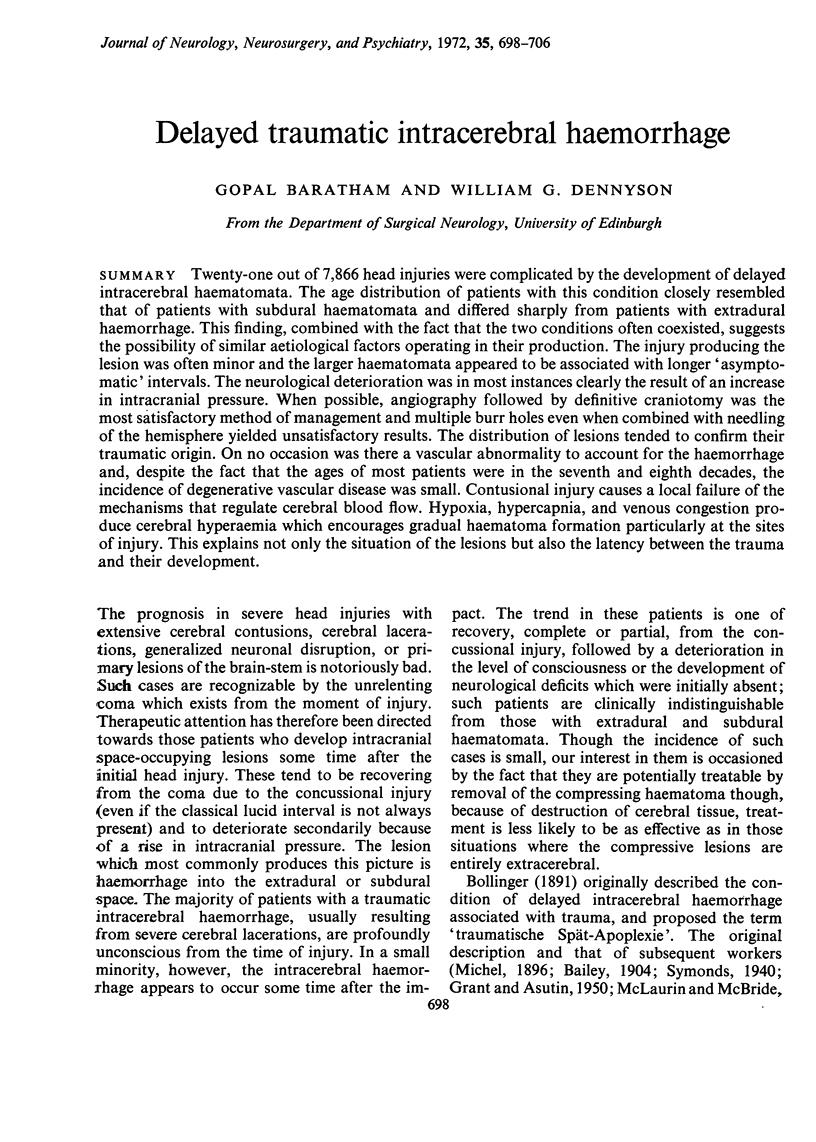
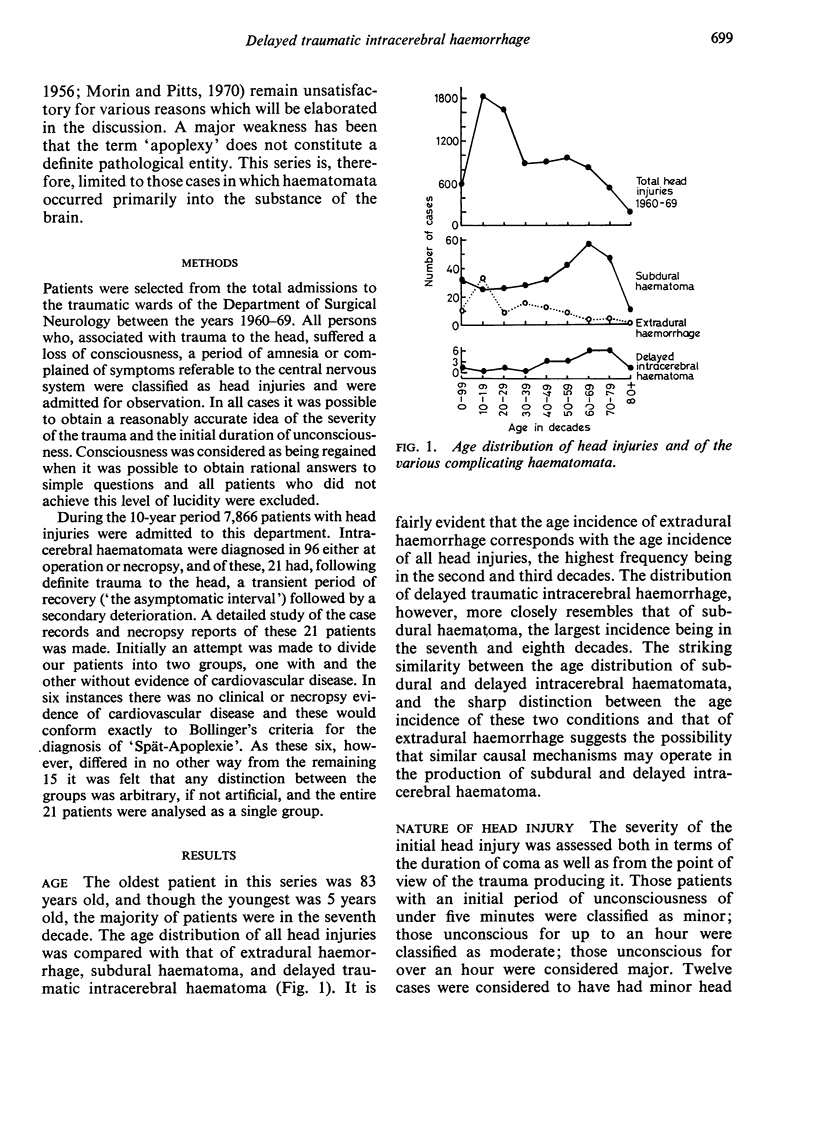
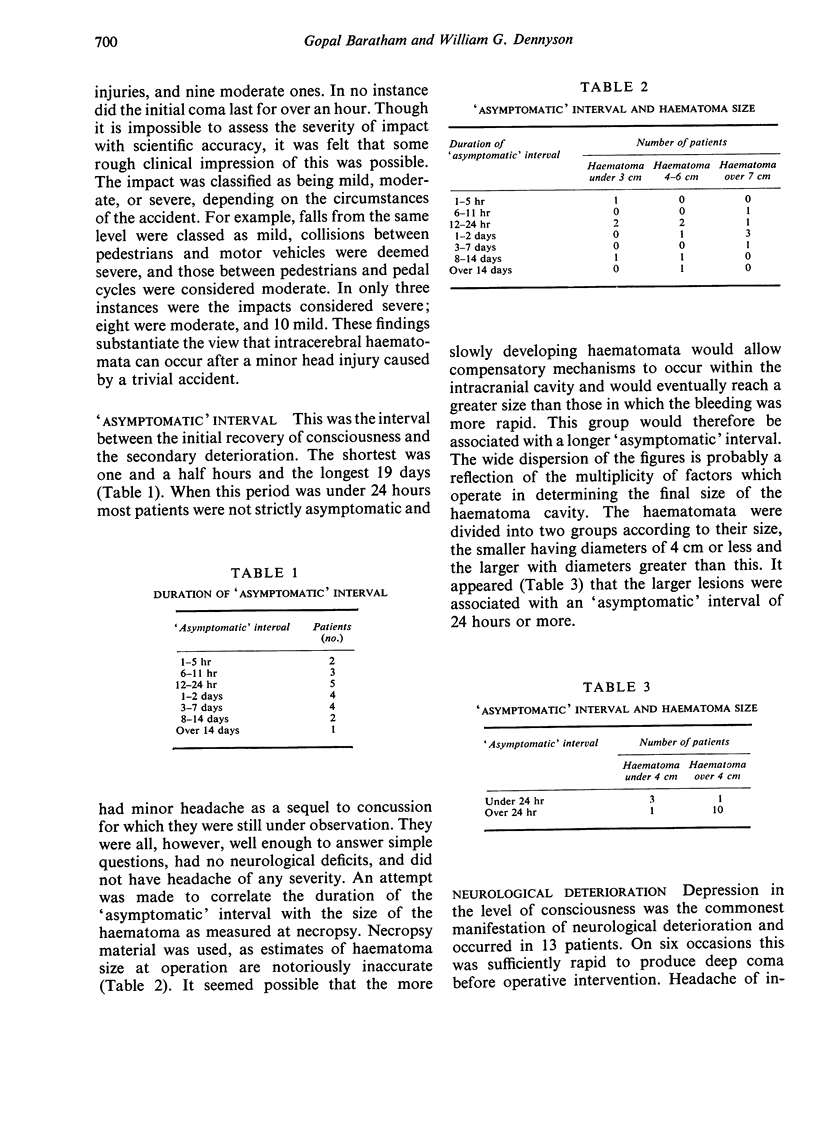
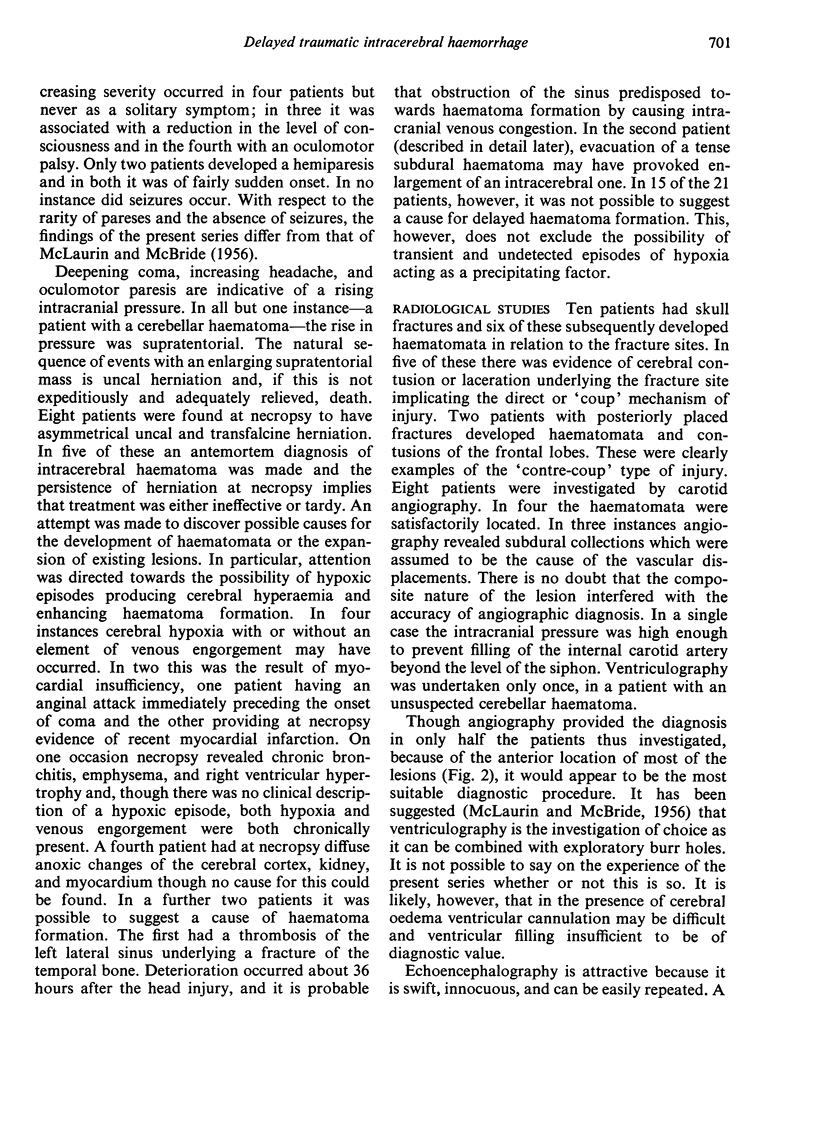

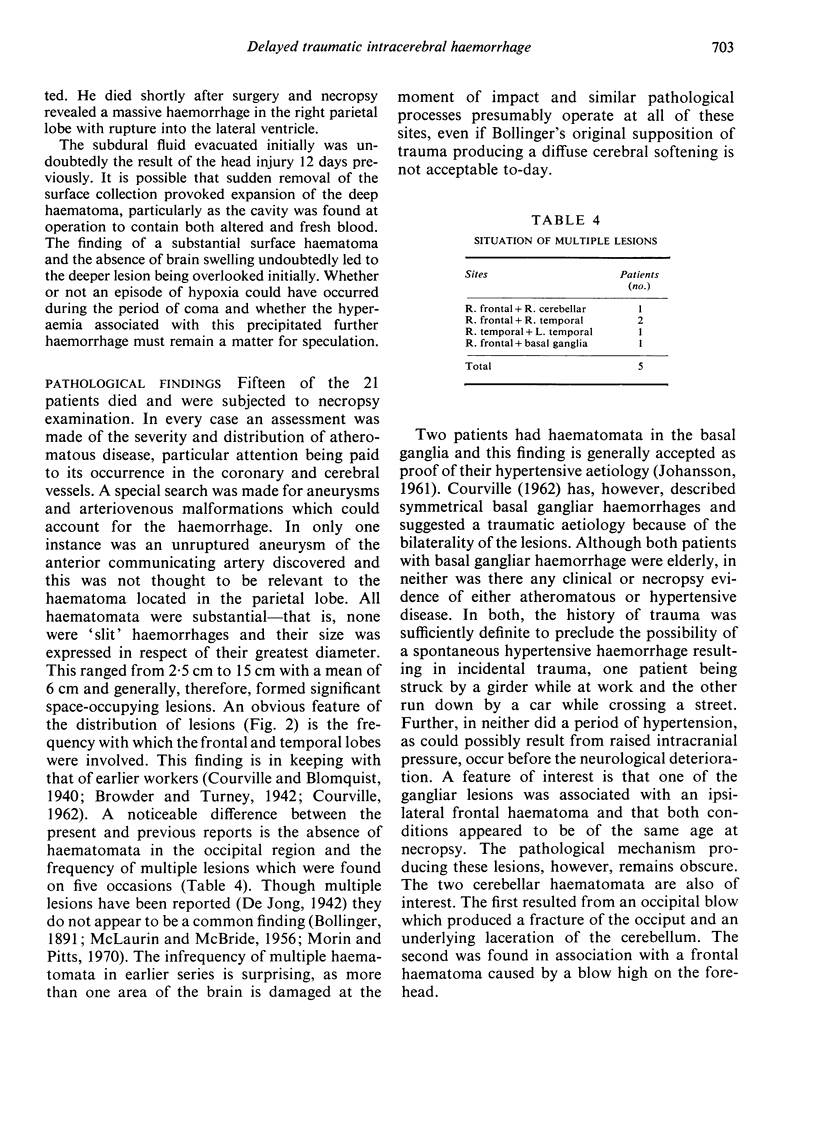
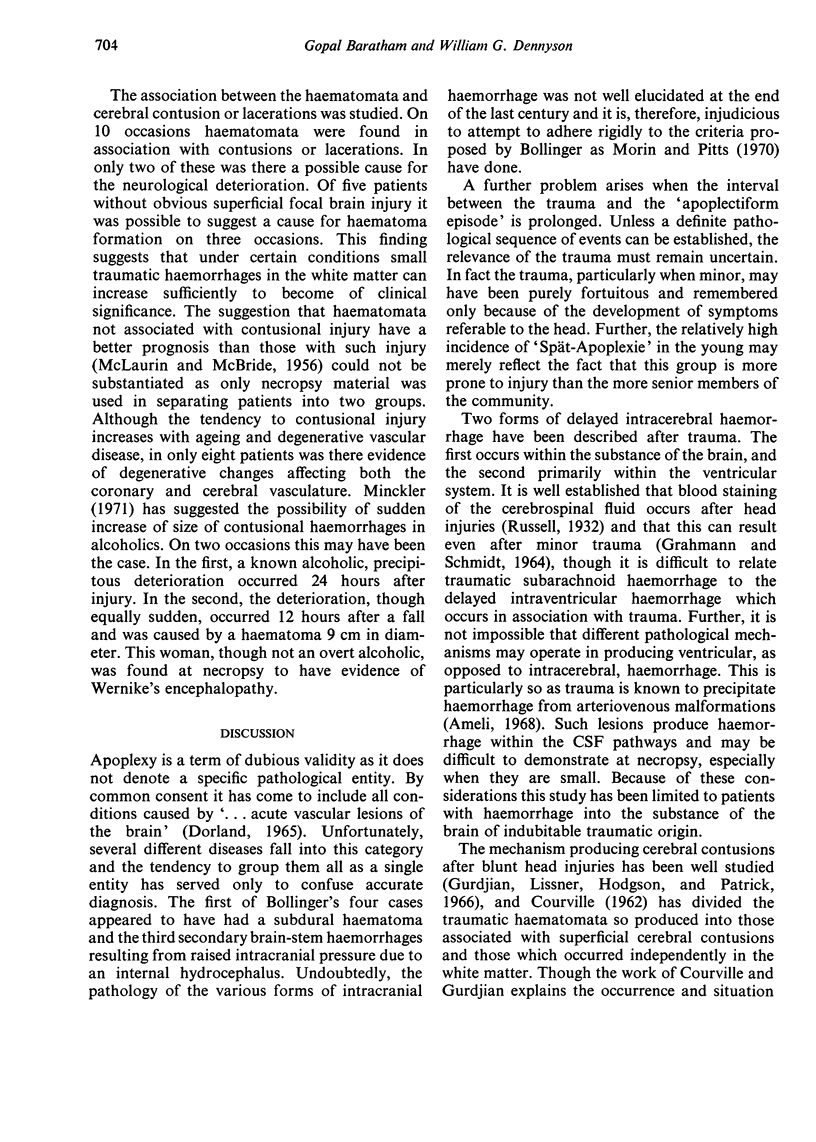
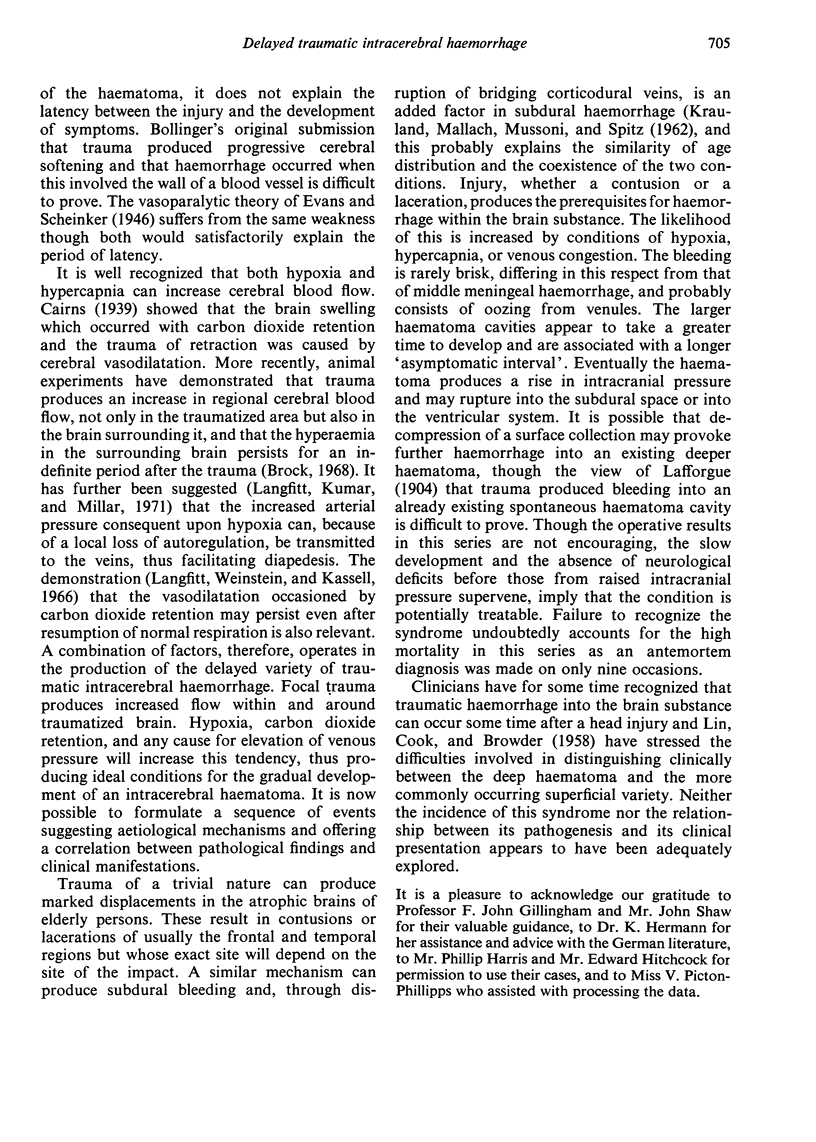
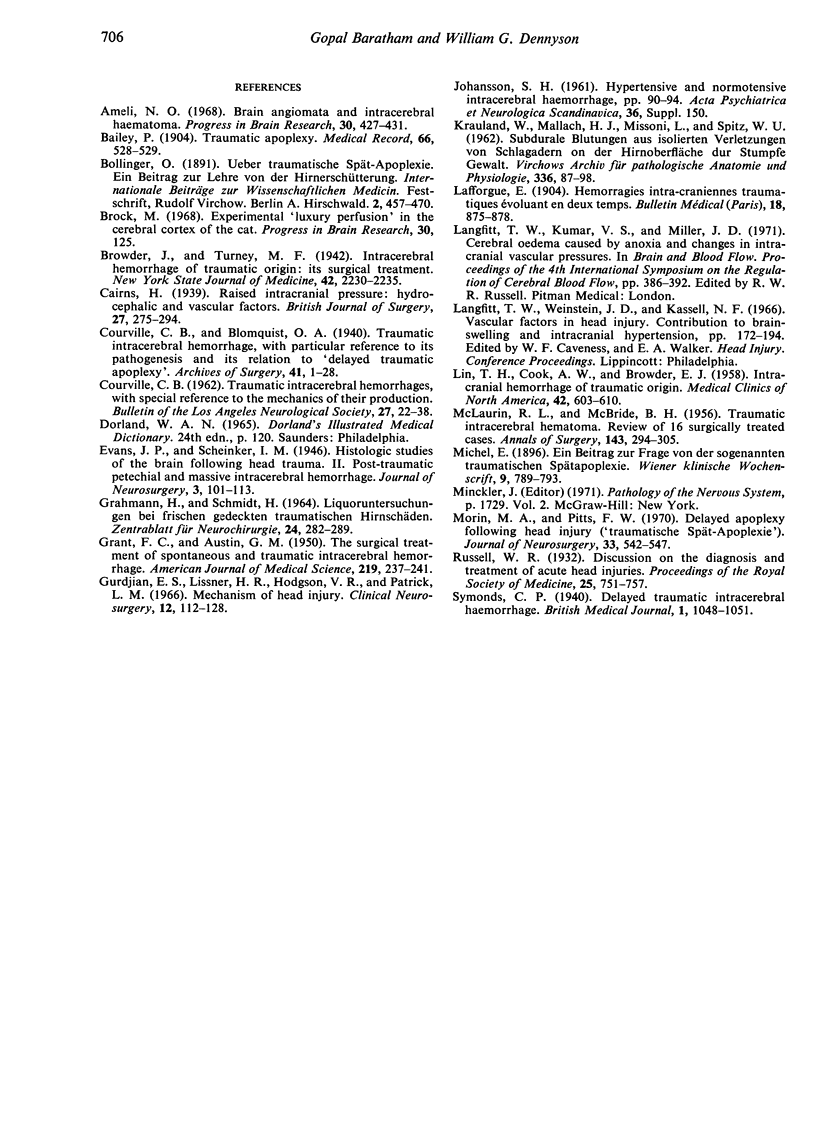
Selected References
These references are in PubMed. This may not be the complete list of references from this article.
- Ameli N. O. Brain angiomata and intracerebral haematoma. Prog Brain Res. 1968;30:427–431. doi: 10.1016/S0079-6123(08)61493-4. [DOI] [PubMed] [Google Scholar]
- COURVILLE C. B. Traumatic intracerebral hemorrhages, with special reference to the mechanics of their production. Bull Los Angel Neuro Soc. 1962 Mar;27:22–38. [PubMed] [Google Scholar]
- GRAHMANN H., SCHMIDT H. LIQUORUNTERSUCHUNGEN BEI FRISCHEN GEDECKTEN TRAUMATISCHEN HIRNSCHAEDEN. Zentralbl Neurochir. 1964;24:282–298. [PubMed] [Google Scholar]
- GRANT F. C., AUSTIN G. M. The surgical treatment of spontaneous and traumatic intracerebral hemorrhage. Am J Med Sci. 1950 Mar;219(3):237–241. doi: 10.1097/00000441-195003000-00001. [DOI] [PubMed] [Google Scholar]
- Gurdjian E. S., Lissner H. R., Hodgson V. R., Patrick L. M. Mechanism of head injury. Clin Neurosurg. 1964;12:112–128. doi: 10.1093/neurosurgery/12.cn_suppl_1.112. [DOI] [PubMed] [Google Scholar]
- JOHANSSON S. H. Hypertensive and normotensive intracerebral haemorrhage. Acta Psychiatr Scand Suppl. 1961;36(150):90–94. doi: 10.1111/j.1600-0447.1961.tb08364.x. [DOI] [PubMed] [Google Scholar]
- LIN T. H., COOK A. W., BROWDER E. J. Intracranial hemorrhage of traumatic origin. Med Clin North Am. 1958 May;42(3):603–610. doi: 10.1016/s0025-7125(16)34268-7. [DOI] [PubMed] [Google Scholar]
- MCLAURIN R. L., MCBRIDE B. H. Traumatic intracerebral hematoma; review of 16 surgically treated cases. Ann Surg. 1956 Mar;143(3):294–305. doi: 10.1097/00000658-195603000-00002. [DOI] [PMC free article] [PubMed] [Google Scholar]
- Morin M. A., Pitts F. W. Delayed apoplexy following head injury ("traumatische spät-apoplexis"). J Neurosurg. 1970 Nov;33(5):542–547. doi: 10.3171/jns.1970.33.5.0542. [DOI] [PubMed] [Google Scholar]


